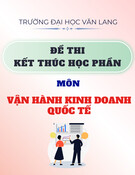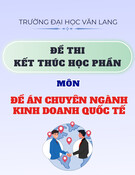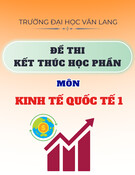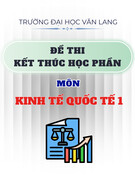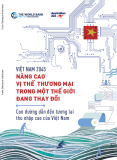
Su tm bi:
www.daihoc.com.vn
2.1.1H i hàng (Inquiry)ỏ
B c c th h i hàngố ụ ư ỏ
•Ph n m đ uầ ở ầ
•Ph n n i dung: nêu lên yêu c uầ ộ ầ
H a h n v kh năng phát tri n quan h ứ ẹ ề ả ể ệ
•Ph n k t thúc: ầ ế
ĐINH VĂN M UẬ

Su tm bi:
www.daihoc.com.vn
Format of a Letter of Inquiry
Follow this format in writing a letter of inquiry:
•In the first paragraph, identify yourself and, if appropriate,
your position, and your institution or firm.
•In the second paragraph, briefly explain why you are
writing and how you will use the requested information.
Offer to keep the response confidential if such an offer
seems reasonable.
List the specific information you need. You can phrase
your requests as questions or as a list of specific items of
information. In either case, make each item clear and
discrete.
•Conclude your letter by offering your reader some
incentive for responding.
ĐINH VĂN M UẬ

Su tm bi:
www.daihoc.com.vn
When writing inquiry letters to an individual or business:
•Be courteous. Remember, by making this request you are imposing on the
reader’s time and/or resources.
•Don’t send an inquiry letter for information that you could easily find out by
other means, such as with a quick search on the Internet.
•Your letter can be fairly short, but it should be long enough to adequately
explain what it is that you are inquiring about and what you want the reader to
do in response to your letter.
•Generally, give at least a couple of weeks for the person, company, or
organization to respond to your inquiry before sending a follow-up letter or
making a follow-up phone call.
•If appropriate, you may want to mention that you will keep any information
provided confidential. (This may increase the likelihood that the reader will
respond to your inquiry.)
•Make it as easy as possible for the person to respond to your request. This
might mean offering to pay for any needed photocopies or mailing costs, or
perhaps including a self-addressed, stamped envelope; necessary forms,
questionnaires, or other documents; and so forth.
•Make sure to include contact information so that the person can easily get in
touch with you if necessary, such as your cell or home phone number or e-
mail address.
•When the person responds to your inquiry, it is a good idea to send a quick
note of thanks expressing your appreciation and telling how the information
helped (or can help) you. If appropriate, you may want to offer to return the
favor in the future.
ĐINH VĂN M UẬ

Su tm bi:
www.daihoc.com.vn
•6 tips for writing effective inquiry letters:
•Begin your letter by stating who you are and giving your status or
position (such as student, researcher, interested consumer, etc.), and
tell how you found out about the individual or entity that you are
writing to.
•Clearly state what it is that you are inquiring about and what you
would like the recipient of your letter to do. Make your inquiry as
specific as possible.
•You might want to briefly explain the purpose of your letter or what you
hope to accomplish. Such an explanation may prompt the recipient of
your letter to act more quickly.
•If appropriate, consider mentioning the letter recipient’s qualifications
for responding to your inquiry (this may prompt him/her to act when
he/she might otherwise be hesitant to do so). For example, you could
explain that you are writing to the reader because she is a leader in
her field and the accepted authority on the subject you are interested
in.
•Include the date by which you need the information, services, etc. that
you are requesting, and indicate that you await the reader’s response.
•Thank the person for his/her time.
ĐINH VĂN M UẬ

Su tm bi:
www.daihoc.com.vn
•The following letter of inquiry is written by a computer
programmer requesting specific information about an
upcoming release of a software product.
ĐINH VĂN M UẬ












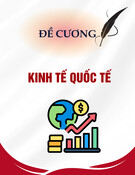

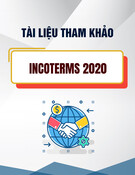
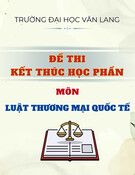
![Đề thi Luật Thương mại quốc tế học kì 1 năm 2024-2025 có đáp án (Đề 1) - [kèm đề thi]](https://cdn.tailieu.vn/images/document/thumbnail/2025/20250925/kimphuong1001/135x160/14521758785752.jpg)
